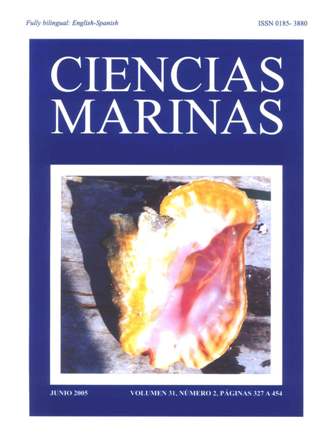Feeding resource partitioning between Mullus barbatus and M. surmuletus in the Catalan Sea (northwestern Mediterranean)
Main Article Content
Abstract
The diet composition of Mullus barbatus and M. surmuletus in relation to ontogeny was compared to evaluate resource partitioning between these sympatric species. For each species, the fish were grouped by total length (LT) into 1-cm length classes. Cluster analyses were performed using the Bray-Curtis similarity index and the group average link method (UPGMA). The results defined six new length groups based on diet similarities: (I) oldest adults of M. surmuletus (21–31 cm LT), (II) newly settled individuals of both species (6–8 cm LT), (III) oldest adults of M. barbatus (19–21 cm LT), (IV) adults of M. barbatus (12–18 cm LT), (V) juveniles of both species, and (VI) adults of M. surmuletus (12–20, 22 cm LT). The analysis of similarities (ANOSIM) showed that there were significant differences in trophic composition between successive length groups (P ≤ 0.05). Although these sympatric species feed on a similarly wide range of prey, the relative proportion of their items showed clear differences between species and also throughout their ontogeny; these differences were more evident as the fish aged. The feeding patterns described in the present paper reveal the importance of the food partitioning strategy to allow the intra- and interspecific occurrence of these sympatric species.
Downloads
Article Details

This work is licensed under a Creative Commons Attribution 4.0 International License.
This is an open access article distributed under a Creative Commons Attribution 4.0 License, which allows you to share and adapt the work, as long as you give appropriate credit to the original author(s) and the source, provide a link to the Creative Commons license, and indicate if changes were made. Figures, tables and other elements in the article are included in the article’s CC BY 4.0 license, unless otherwise indicated. The journal title is protected by copyrights and not subject to this license. Full license deed can be viewed here.

